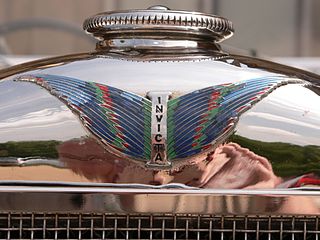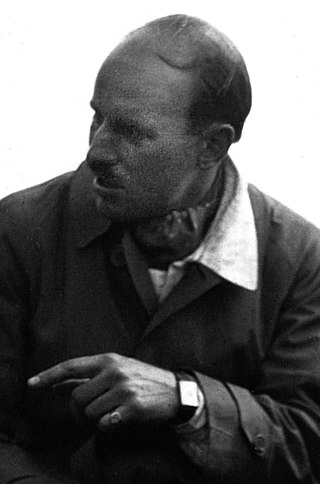Hillman was a British automobile marque created by the Hillman-Coatalen Company, founded in 1907, renamed the Hillman Motor Car Company in 1910. The company was based in Ryton-on-Dunsmore, near Coventry, England. Before 1907 the company had built bicycles. Newly under the control of the Rootes brothers, the Hillman company was acquired by Humber in 1928. Hillman was used as the small car marque of Humber Limited from 1931, but until 1937 Hillman did continue to sell large cars. The Rootes brothers reached a sixty per cent holding of Humber in 1932 which they retained until 1967, when Chrysler bought Rootes and bought out the other forty per cent of shareholders in Humber. The marque continued to be used under Chrysler until 1976.

The Suzuki Cappuccino is a sports car produced by the Japanese company Suzuki from 1991 to 1998. It is a two-seater roadster with a detachable hardtop that is designed to meet Japanese kei car regulations.

Singer Motors Limited was a British motor vehicle manufacturing business, originally a bicycle manufacturer founded as Singer & Co by George Singer, in 1874 in Coventry, England. Singer & Co's bicycle manufacture continued. From 1901 George Singer's Singer Motor Co made cars and commercial vehicles.

The Austin 7 is an economy car that was produced from 1923 until 1939 in the United Kingdom by Austin. It was nicknamed the "Baby Austin" and was at that time one of the most popular cars produced for the British market and sold well abroad. Its effect on the British market was similar to that of the Model T Ford in the US, replacing most other British economy cars and cyclecars of the early 1920s. It was also licensed and copied by companies all over the world. The first BMW car, the BMW Dixi, was a licensed Austin 7. In France they were made and sold as Rosengarts, and in the United States they were built by the American Austin Car Company. In Japan, Nissan also used the 7 design as the basis for their first cars, although not under licence. This eventually led to a 1952 agreement for Nissan to build and sell Austins in Japan under the Austin name.

Invicta is a British automobile manufacturer. The brand has been available intermittently through successive decades. Initially, the manufacturer was based in Cobham, Surrey, England, from 1925 to 1933, then in Chelsea, London, England, from 1933 to 1938 and finally in Virginia Water, Surrey, England, from 1946 to 1950. More recently, the name was revived for the Invicta S1 sports car produced between 2004 and 2012.

The Rolls-Royce Silver Ghost name refers both to a car model and one specific car from that series. Originally named the "40/50 h.p." the chassis was first made at Royce's Manchester works, with production moving to Derby in July 1908, and also, between 1921 and 1926, in Springfield, Massachusetts, USA. Chassis no. 60551, registered AX 201, was the car that was originally given the name "Silver Ghost". Other 40/50 hp cars were also given names, but the Silver Ghost title was taken up by the press, and soon all 40/50s were called by the name, a fact not officially recognised by Rolls-Royce until 1925, when the Phantom range was launched.
Morris Cowley was a name given to various cars produced by Morris from 1915 to 1958.

The Sunbeam 350HP is an aero-engined car built by the Sunbeam company in 1920, the first of several land speed record-breaking cars with aircraft engines.

Coventry Premier Limited owned a British car and cyclecar manufacturing business based in Coventry from 1912 to 1923. It changed its name from Premier Cycles to Coventry Premier Ltd in November 1914.

The Ner-A-Car was a type of feet forwards motorcycle designed by Carl Neracher in 1918. It used an unusual steel-channel chassis, much like an automobile, and hub-center steering at the front wheel, making it 'nearly a car' in design. The Ner-A-Car was the most successful hub-center steering motorcycle ever produced, with sales far eclipsing earlier or later examples of this design, such as the Yamaha GTS1000 or Bimota Tesi. About 10,000 Neracars were manufactured in the United States by the Ner-A-Car Corporation, while around 6,500 are believed to have been produced in England under licence by the Sheffield-Simplex company between 1921 and 1926 under the Ner-A-Car name.
The Rover 8 was a small single-cylinder 8 hp 1327 cc car made by the British Rover car company. It was Rover's first production car. It was remarkable for being supported by a backbone chassis rather than a conventional ladder frame. The first model was manufactured from 1904 to 1912. A Daimler-Knight sleeve valve engine option was available on the original model in 1911 and 1912.

John Stuart Hindmarsh was an English racecar driver and aviator.

The Humber Hawk is a four-cylinder automobile manufactured by British-based maunufacturer Humber Limited from 1945 to 1967.
Sir (Albert) Noel Campbell Macklin was an innovative British car maker and boat designer. He founded Eric-Campbell in 1919, Silver Hawk in 1920, Invicta in 1925 and Railton in 1933. In 1939 he founded Fairmile Marine and supplied boats to the Royal Navy throughout World War II, for which effort he was honoured with a knighthood.

Galloway was a Scottish car maker founded in 1920 as a subsidiary company to Arrol-Johnston. It was based at first at Tongland, Kirkcudbrightshire, and from 1923 at Heathall, Dumfries. It closed in 1928.
The Palmerston was a British car made by the Palmerston Motor Company based in Bournemouth, England between 1920 and 1923.

The Eric-Campbell was a British car made from 1919 to 1924 by Eric-Campbell & Co Limited of Cricklewood, London. The company was formed by H Eric Orr-Ewing and Noel Campbell Macklin.

The Warren-Lambert Engineering Co. Ltd. was a British automobile manufacturer that was established from 1912 to 1922 in Richmond, then in Surrey. A. Warren Lambert, was an agent for Morgan cars in Putney which he also raced. In 1912 he designed and started to manufacture a two-seat four-wheel cyclecar from premises in Uxbridge Road, Shepherd's Bush. It was well received and around 25 cars a week were being made.

Violette Cordery was a British racing driver and long distance record breaker.

The "bullnose" Morris Oxford is a series of motor car models produced by British manufacturer Morris from 1913 to 1926. It was named by W R Morris after the city in which he grew up and which his cars were to industrialise.















